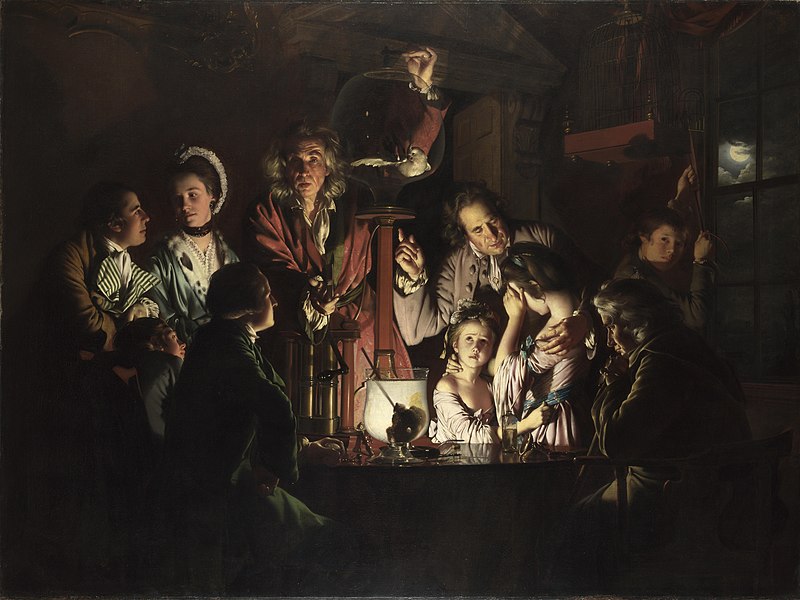
An Experiment on a Bird in the Air Pump, oil on canvas by Joseph Wright of Derby, 1768; in the collection of the National Gallery, London.
Joseph Wright of Derby, an 18th-century English painter, left an indelible mark on the art world with his captivating portrayal of scientific curiosity and the human condition. Among his masterpieces, “An Experiment on a Bird in the Air Pump” stands as a striking testament to the intersection of art, science, and societal reflection.
Setting the Scene
Painted in 1768, during the Age of Enlightenment, the canvas captures a pivotal moment in the history of scientific inquiry. Wright’s composition centers around a dramatic experiment conducted by a natural philosopher, the precursor to the modern scientist, in a dimly lit room.
The Experiment Unfolds
At the heart of the painting is a glass air pump, a cutting-edge scientific instrument of the time. The experiment involves depriving a white cockatoo of air, symbolizing the sacrifice of life for the sake of knowledge. The scene is hauntingly beautiful, with the soft glow of the pump’s light casting shadows on the faces of the diverse group of observers.
Human Responses: A Spectrum of Emotions
Wright masterfully captures the array of emotional reactions among the onlookers. From the fascinated scientist adjusting the apparatus to the children recoiling in horror, each face tells a story. The painting becomes a microcosm of societal attitudes toward scientific progress, highlighting the tension between enlightenment and ethical considerations.
The Play of Light and Shadow
Wright’s exceptional use of chiaroscuro, the interplay of light and shadow, enhances the emotional intensity of the scene. The stark contrast between the illuminated central figures and the surrounding darkness creates a theatrical atmosphere, drawing the viewer into the moral and philosophical dilemmas posed by scientific exploration.
Symbolism and Layers of Meaning
Beyond its literal interpretation, “An Experiment on a Bird in the Air Pump” is rich in symbolism. The caged bird becomes a metaphor for the fragility of life and the pursuit of knowledge at the expense of living beings. The diverse group of spectators reflects the broader societal implications of scientific advancement, prompting viewers to contemplate the ethical dimensions of progress.
Wright’s Contribution to Enlightenment Thought
Wright’s painting aligns with the Enlightenment ideals of reason, empiricism, and progress. It captures a moment when science was emerging as a guiding force, challenging traditional beliefs and paving the way for a new era of intellectual inquiry. The canvas becomes a reflection on the dual nature of enlightenment, shedding light on both its transformative power and the moral quandaries it poses.
Enduring Impact and Contemporary Relevance
“An Experiment on a Bird in the Air Pump” continues to captivate art enthusiasts, scholars, and those interested in the interplay between science and culture. Its themes remain relevant in a world grappling with the ethical implications of scientific and technological advancements, making it a timeless exploration of the human condition.
In Joseph Wright’s masterpiece, the canvas becomes a stage where science and humanity converge, inviting viewers to ponder the intricate dance between progress and morality. “An Experiment on a Bird in the Air Pump” stands not only as a snapshot of a specific historical moment but as a timeless work that encourages reflection on the enduring complexities of the human experience.
